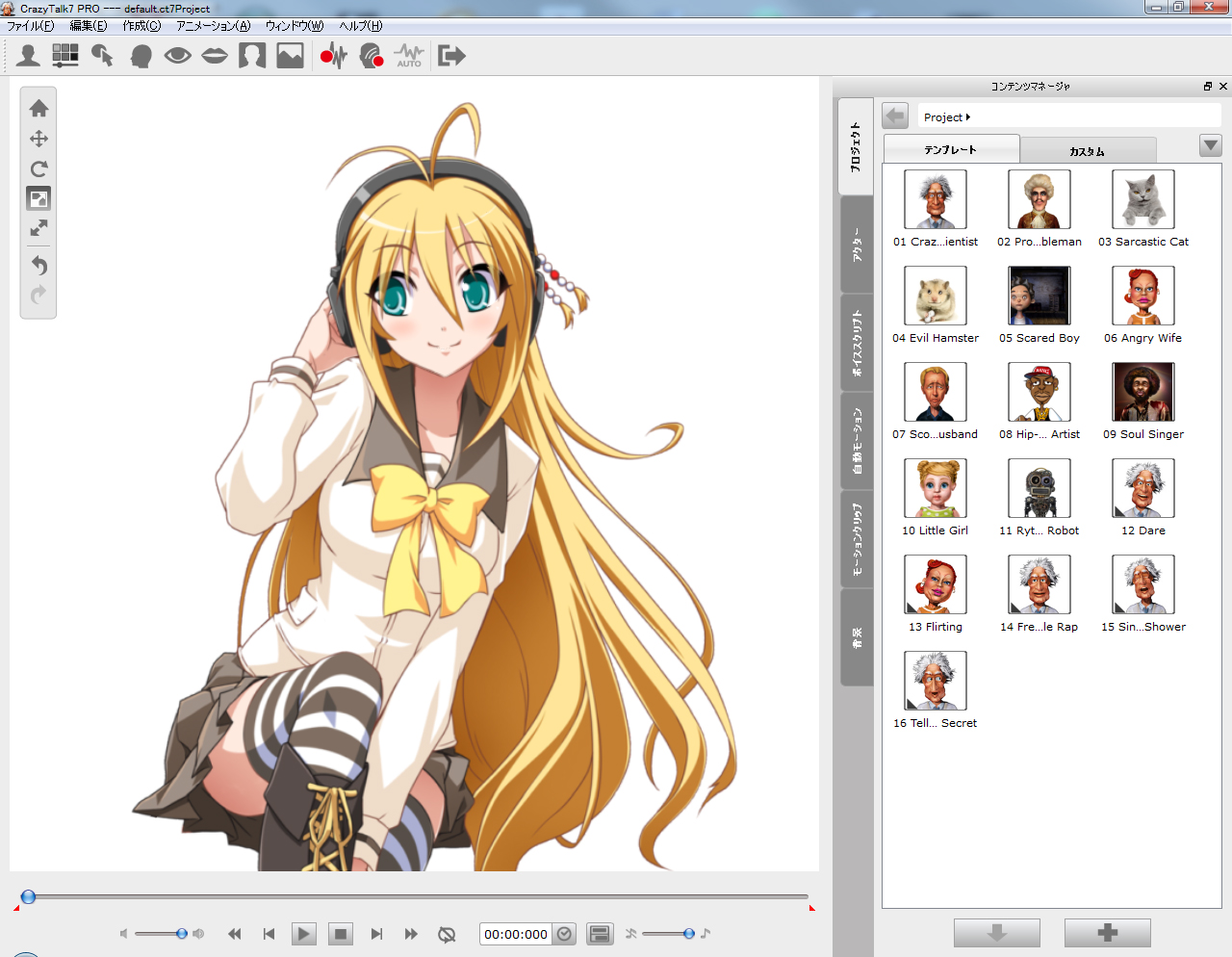


(Just be aware, using more involved ones on longer scripts can result in slowdown, so you may want to add your automotion after the fact before you export.) Depth of Options

The automotion elements allow you to essentially create a physical body language for your characters, which makes them more like actual actors. There’s currently no option to switch from frames to timecode, nor to go automatically to the max length of 15 minutes. The default length is currently less than a minute, so changing this is a necessity. (I had to rummage around on the online FAQ after hours of fruitless searching for the timeline length feature. While the overall learning curve and ease of use do make sense, I do hope that CrazyTalk8 will address an issue that is of notable concern to the microbudget content: Allow the user to easily change the timeline length AND give the options to enter this length in frames OR timecode.
CRAZYTALK 7 STANDARD PRO
If you’re doing any form of multiple character animation, you’ll then take the separate shots and edit them in a nonlinear editor like Premiere Pro or Final Cut Pro. (We tracked at Oakwood Sound Design, so had really amazing audio to work from.)Īdditional adjustments could then be made to the animation, followed by final exports in a number of different formats and sizes.
CRAZYTALK 7 STANDARD SOFTWARE
After that and some more general tweaking/layout options and background selection, you import your audio track and, right out of the box, the software can do general mouth animation to the voice track-so long as it’s clean and clear. While CT7 will allow you to freeze the background from your characters, I found it more effective to cut out the character in Photoshop ahead of time.įrom here, it was a simple a matter of laying out the guide overlays so the program knew where the eyelids were, where the nose was, etc. For most of our readers, Pro would be the one most considered.) The key differences between it and CrazyTalk7 Basic are in the amount of control you have for fine tuning and finessing the animation of your characters. ( Note: We reviewed CrazyTalk7 Pro in this review.

In CrazyTalk7, however, the core animation is now much more robust, but we’ll get into that later.) Then you tweak auto-motion profiles (also new to CT7), adjust specific animations, and tweak individual expressions to taste. (In past versions, the auto animation was limited mainly to mouth movement with a median level of eye blinking to go with it. While CrazyTalk Animator is designed for more complex 2D animations that include sets and fully animated figures, the original CrazyTalk franchise is designed to simplify animation for “talking-head”-type pieces by having mouth animation interpreted automatically off the syllables and phonemes in an audio track and applied to a mapped picture or drawing. That’s when we looked more deeply at Reallusion’s CrazyTalk7 (CT7), the smaller, older brother of the larger CrazyTalk Animator. As we discussed this concept, we looked at different animation options that have been used for other animated shows, but all of them required a much greater force of animators that we had at our disposal. The concept of a true talk show that’s entirely animated hasn’t really been explored to my knowledge. When our affiliate– the magazine for the Gothic arts community, DarkestGoth Magazine–needed a cutting edge video talk show that pushed the boundaries of microbudget creation, we looked at the notion of making it an animated show. Hanke on | 0 commentsĬrazyTalk7 Pro Publisher: Reallusion, Inc.ĭescription: Photo/drawing animation/warping software


 0 kommentar(er)
0 kommentar(er)
